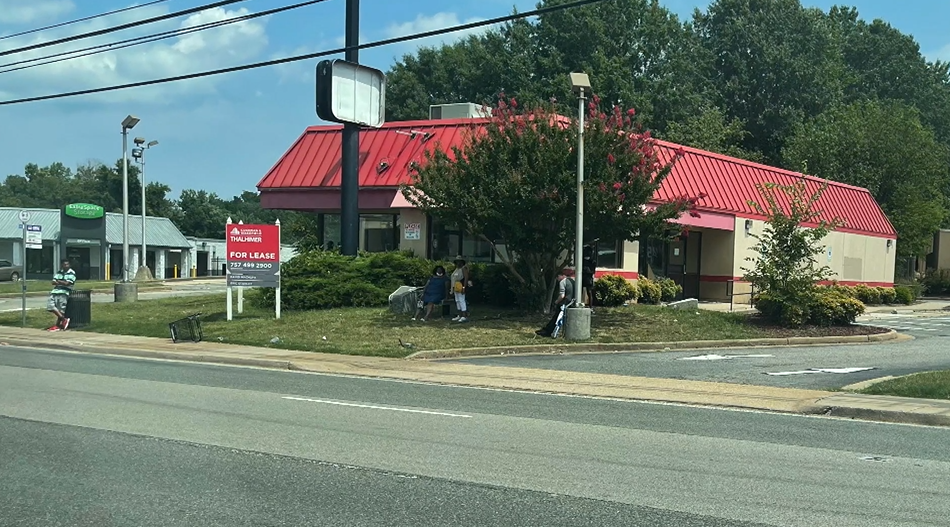RICHMOND, Va. -- Bus riders throughout Central Virginia rely on the Greater Richmond Transit Company (GRTC) to get where they need to go, but the time they spend waiting on a bus has been described as uncomfortable and unaccommodating.
Yahmeese Thompson found a greater appreciation for convenience on a blazing hot Thursday afternoon as she waited for the GRTC Pulse at Willow Lawn.
“I’m grateful. I’m grateful because not everybody has this," Thompson said.
She was referring to a bench to sit on and a cover to block out the sun. Thompson considered herself lucky since a majority of bus stops throughout the region lack basic accommodations.
“I feel like that's a really big concern for the community, because a lot of people, the elderly folks and stuff, would like to sit down and stuff like that with the bus stop," Thompson said.

According to a recent infrastructure report, only 5% of GRTC's 1,609 bus stops currently have shelter. Just 21% have seating.
“I feel like it's ridiculous. It doesn't make any sense," Thompson said. “A lot of people want answers and want to know why the bus benches are not there.”
Tim Sam, who works next to a stop with no amenities on West Broad Street in Henrico, said he frequently witnesses riders waiting in what he called "miserable conditions."
“You see quite a bit of people just out here sitting on the ground or wherever they can," Sam said. “It stinks. I mean, it would be better to be a little bit more comfortable in 100-degree heat.”

The CBS 6 Problem Solvers snapped a photo of a bus stop outside a vacant Hardee's showing people having to sit on shopping carts and leaning up against a trash can and pole as they waited.
GRTC Chief Development Officer Adrienne Torres recognized the location in front of the closed fast food restaurant as a "very busy stop" and said she is aware of people having nowhere to rest.
“We have been working with Henrico County to hopefully eventually do improvements there," Torres said.
However, she mentioned barriers stand in the way of making progress or determining a timeline. The sidewalk isn't big enough to install a bench, and there's uncertainty about what the property will become.
"We did start coordinating with the Hardee's. However, as you've seen, there is no Hardee's there anymore. So we've attempted to reach out to the new owner to see if we can do improvements, but it's kind of a gray area for what's happening in that location. As far as our knowledge, we have not been able to make improvements," Torres said.

But similar examples of red tape exist with every project, according to Torres. She said installing resources requires a lengthy approval process, often involving "lots of coordination" with jurisdictions, private owners, urban design committees, and even state entities.
“There are risks and challenges with this whole process of even being successful," Torres said. “Just to give some background on that, the current shelter style that we have approved now within the counties just got VDOT [Virginia Department of Transportation] approval, and it took us two-and-a-half years to get there.”

But Sam said he took issue with the bureaucratic restrictions delaying how quickly projects can be completed.
"It's absurd," he said. "I feel like there are things that should be way more regulated than putting up a bench."
GRTC remains hopeful a new proposed plan will hold the key to change.
Over the next five years, GRTC aims to grow its percentage of stops with a bench or covering from 26% to 50%.
That means GRTC would install 160 shelters and 322 benches. A goal described as "aspirational" would aim for 75% of stops to have a bench or cover by 2027.
Torres said GRTC would use scores for usage and equity to determine which stops take priority in the initiative.
"One of the big attributes is ridership. Higher density stops will kind of be looked at first but also looking at the frequency of the bus coming to the stop. So, the longer you have to wait, then you kind of tick up in terms of priority," Torres said.
The complete attainable project, which also involves expanding access for riders with disabilities to ADA-compliant bus stops, would cost $11 million.
Torres said GRTC is still "coordinating on the funds."
The proposal noted that prices and the timeline for installation will be impacted by inflation and supply chain issues.
GRTC has applied for congressional grants to potentially help cover the project's costs and will know more in the fall.
During a July 19 GRTC Board of Directors meeting, the board delayed voting on the proposed plan. Torres said she was hopeful the board would grant approval during its August meeting.
Thompson said she wishes the changes would come sooner rather than later because riders deserve more dignity.
“It is most necessary, and we need to make our riders as comfortable as possible," Thompson said.
This is a developing story, so anyone with more information can email newstips@wtvr.com to send a tip.









